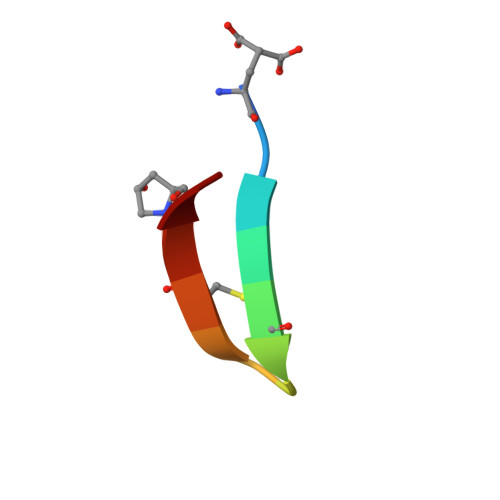Somatostatin venom analogs evolved by fish-hunting cone snails: From prey capture behavior to identifying drug leads.
Ramiro, I.B.L., Bjorn-Yoshimoto, W.E., Imperial, J.S., Gajewiak, J., Salcedo, P.F., Watkins, M., Taylor, D., Resager, W., Ueberheide, B., Brauner-Osborne, H., Whitby, F.G., Hill, C.P., Martin, L.F., Patwardhan, A., Concepcion, G.P., Olivera, B.M., Safavi-Hemami, H.(2022) Sci Adv 8: eabk1410-eabk1410
- PubMed: 35319982
- DOI: https://doi.org/10.1126/sciadv.abk1410
- Primary Citation of Related Structures:
7SMU - PubMed Abstract:
Somatostatin (SS) is a peptide hormone with diverse physiological roles. By investigating a deep-water clade of fish-hunting cone snails, we show that predator-prey evolution has generated a diverse set of SS analogs, each optimized to elicit specific systemic physiological effects in prey. The increased metabolic stability, distinct SS receptor activation profiles, and chemical diversity of the venom analogs make them suitable leads for therapeutic application, including pain, cancer, and endocrine disorders. Our findings not only establish the existence of SS-like peptides in animal venoms but also serve as a model for the synergy gained from combining molecular phylogenetics and behavioral observations to optimize the discovery of natural products with biomedical potential.
- Department of Biomedical Sciences, University of Copenhagen, Copenhagen-N 2200, Denmark.
Organizational Affiliation:



















